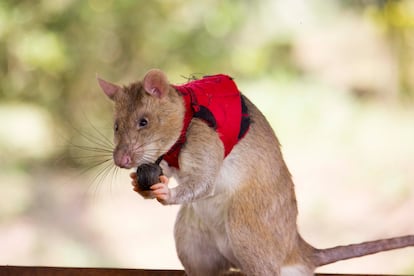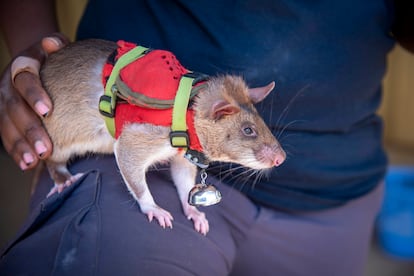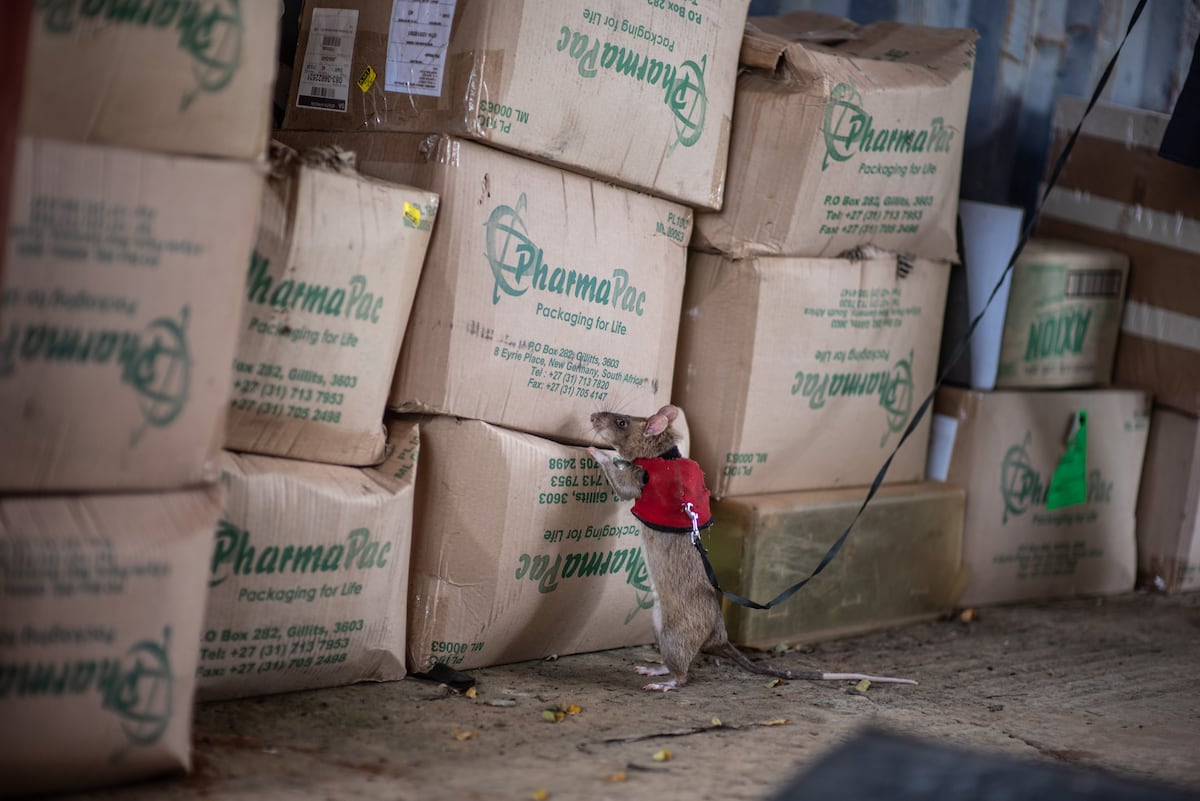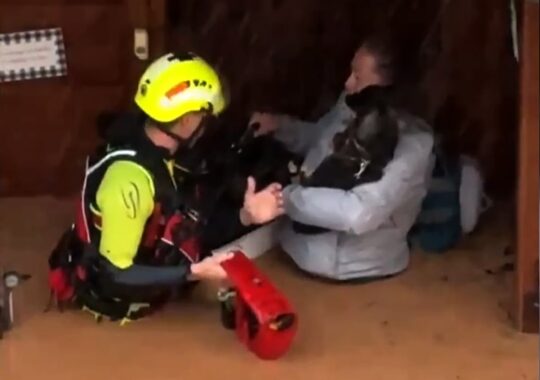betty has a developed sense of smell. His hairy body slinks through the dirt, just as he has learned during months of training in Tanzania. It moves from one side to the other, peering into every corner and scanning the rubble in its path with its small black eyes. His job is not easy, but thanks to his nose he has learned to detect the smell of pangolin scales, ivory or African blackwood, a valuable shrub that can reach 18 meters in height. She, after all, is a giant rat (Cricetomys ansorgei) who lives in a country in southeastern Africa where illegal logging is around 96% and the elephant population has been reduced by 90% in recent decades. A new study, published this Wednesday in the magazine Frontiers in conservation sciencesreveals how betty and eight of her companions could help fight against the illicit trafficking of wild flora and fauna.
The researchers, led by Isabelle Szott of the Okeanos Foundation, initially trained a group of 11 rats in the city of Morogoro, specifically at the headquarters of APOPO, a Belgian non-profit organization with 25 years of experience that offers solutions low-cost humanitarian aid. Although in the past these animals have been trained to detect antipersonnel mines and tuberculosis in Cambodia, Angola and Zimbabwe, experts have now taught them to sniff out threatened and endangered species. “Rats can smell things that humans can’t. They are curious and like to learn, which makes it easier for us to train them,” explains Szott.
African rats usually measure about 90 centimeters long and weigh an average of four kilos. These endemic rodents have the stamina to move over large areas and are also agile enough to move in a place as tight as a cargo container. Illegal trafficking—which generates between $7 billion and $23 billion annually—occurs in busy international seaports. Despite the authorities’ efforts to contain this problem, current procedures are expensive and slow.

This is how in the training sessions that began in 2020, betty He learned to hold his nose to learn to distinguish smells. When I did it correctly, I received a sandwich. Rats that made it to the end of the experiment were exposed to other odors such as electrical wires, coffee grounds and detergent, which are often used to mask wildlife trails in real life. “If they don’t want to work, we try it an hour later, we don’t punish them if they do something wrong. Your safety is our top priority,” says Szott.
The rats, on the other hand, were able to remember the odors months after training and obtained almost perfect retention scores. Scientists suggest that their cognitive performance is similar to that of dogs, but unlike dogs – whose training costs between $20,000 and $30,000 – they are easy to move, and with the necessary care they have a useful life nine years old, says the scientist.
At the end of the training, eight rats were able to identify four wildlife species commonly targeted by smuggling among “146 non-target substances,” the study states. Overall, the analysis demonstrates the potential usefulness of using these animals in detecting wildlife trafficking, but according to the authors, more research is needed to establish the feasibility of its implementation.
Vests and cameras
Meanwhile, the next step for scientists will be to create communication mechanisms for rodents. “We have already carried out tests in the seaport of Dar es Salaam (Tanzania), but the results of that work have not yet been published,” advances Isabelle Szott. That is why betty Together with their peers they will be equipped with custom-made vests. “We need the rats to tell us when they find something, because if we think about a port we won’t be able to see them among all the packages,” he explains.
The scientists will add a small rubber ball with a microswitch that will beep to the vests, so the rats can communicate. They are also working on developing a backpack with a camera, to see where the rodent moves when inspecting a container.

The eight species of pangolins that exist in the world (four of them on the African continent), all types of elephants (Tanzania has lost half of them) and rhinos are included as threatened on the Red List of the International Union for the Protection of Human Rights. Nature Conservation. Pangolins are trafficked internationally for meat and scales, because they are considered luxury products. The Convention on International Trade in Endangered Species of Wild Fauna and Flora, which came into force in 1975, has served to protect many species from the brink of extinction, but over the years, global trade has been developing.
Laura Moreno, head of the Endangered Species Program at WWF Spain, explains that wildlife trafficking in general is not considered by authorities to be a serious crime. “This makes it a safe business because it is very lucrative. It is at the same level as trafficking in weapons, drugs and even people,” comments the expert, who did not participate in the investigation. A common inspection method at both airports and ports is the X-ray scanner. It is a useful technology, but unable to distinguish different types of organic material.
“Human capabilities in terms of human and economic resources are limited to monitor this type of crime, so it is clear that we need something more,” says Moreno. Illegal trade is the second biggest threat to biodiversity, according to the NGO, after habitat destruction and loss.
Spain, according to a WWF reportIt has a role as an importer and exporter of wild flora and fauna due to its geographical location, mainly from Algeciras, Valencia and the Canary Islands. The country is a “transit territory” and there are many trade networks from Latin America, Africa and even the Asian continent to other areas. For Moreno, a lot of training and awareness is needed to reduce demand in the countries. “We have a campaign called Stop Species Trafficking that we try to use to raise awareness among citizens of this problem, because sometimes this problem also occurs due to ignorance,” he says.




